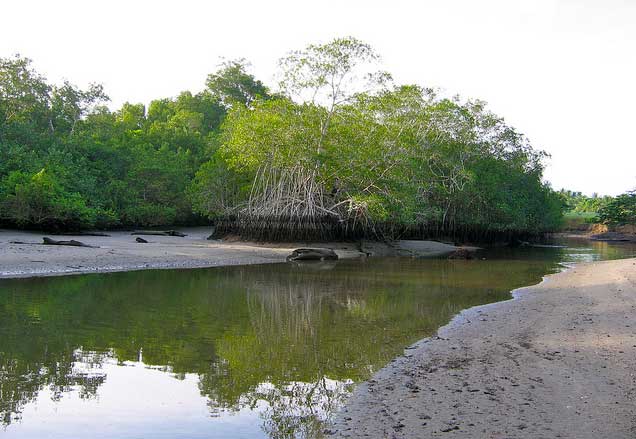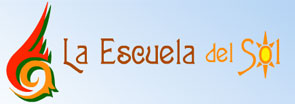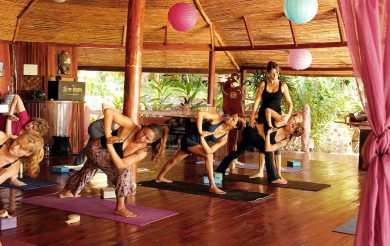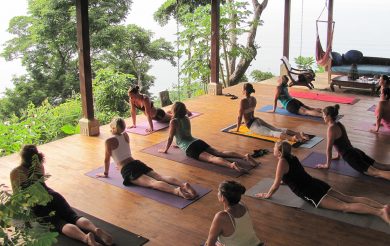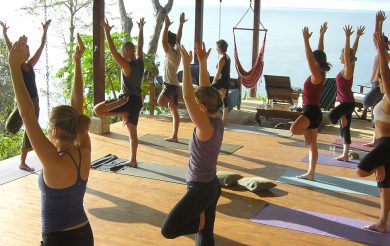- Home
- Accommodation
- Activities
- Area Info
- Maps
- Photo Galleries
- Real Estate
- Travel
Caletas-Arío National Wildlife Refuge
Inscribed relatively recently (in 2006), the Caletas Ario wildlife Refuge (CANWR) has 313 hectares (773 acres) of protected land, plus protected marine reserves that extend 12 miles out to see, encompassing 19,846 Hectares! Within this zone, highly destructive fishing practices are prohibited.
It includes 7km of beaches as well, including the impressive Rio Bongo river delta and mangroves, filled with crocodiles and various other species. It includes a 7km section of the Playa Caletas beaches, which in total is 12 km.
The Rio Bongo is the biggest river in the Southern Nicoya Peninsula, and fairly close to the rivermouth, three large rivers join forces (Rio Bongo, Rio Arío, and Rio Caño Seco.) During rainy season it’s nearly impossible to cross the river in a non-amphibious vehicle.
The Caletas Ario National Wildlife Refuge is part of a very large farm, and was inscribed to become a permanently protected piece of land by the Grew family, who moved here several decades ago from Canada. Much of the family still lives in the area, and a few of the adult children who assist with the project were born in Costa Rica.
The wildlife refuge is supported by CIRENAS (Centro de Investigation de Recursos Naturales y Sociales).
CIRENAS
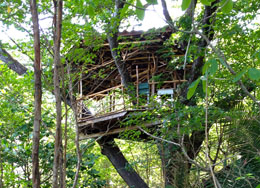 El Centro de Investigation de Recursos Naturales y Sociales is the best project of its type in our area, bringing together local conservationists and foreign experts together to teach classes, offer workshops, create publicity, and other activities in order to bring awareness and protection to the area.
El Centro de Investigation de Recursos Naturales y Sociales is the best project of its type in our area, bringing together local conservationists and foreign experts together to teach classes, offer workshops, create publicity, and other activities in order to bring awareness and protection to the area.
The campus at CIRENAS has several houses, including a beautiful tree house, which you can see here: CIRENAS Campus.
CIRENAS offers a variety of courses, internships, and volunteer programs, which are detailed on its website, along with hundreds of photos of the area.
Sea Turtles
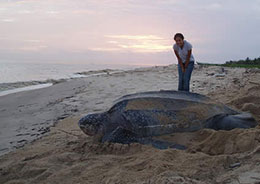 The beaches here are considered to be one of the most important turtle-nesting areas in Costa Rica, and perhaps the world, because it’s one of very few that support four different species of turtle on the same beach, including the world’s largest, the great Leatherback sea turtle, which can grow to nearly the size of a volkswagen bug automobile, and is one of the fastest-swimming animals in the ocean, clocked at up to 22 mph.
The beaches here are considered to be one of the most important turtle-nesting areas in Costa Rica, and perhaps the world, because it’s one of very few that support four different species of turtle on the same beach, including the world’s largest, the great Leatherback sea turtle, which can grow to nearly the size of a volkswagen bug automobile, and is one of the fastest-swimming animals in the ocean, clocked at up to 22 mph.
Also, the very rare Hawksbill sea turtle sometimes nests on these beaches. This turtle is prized for its shells, which are poached and sold to China. Two more common species, the Olive Ridley and the Pacific Green.
Unfortunately, poaching of the sea turtle eggs is still rampant, with very aggressive egg stealers who use ATVs to patrol the beaches in the very early morning and dig up most of the eggs for food and profit. The local government protection agency, MINAE, has been either unwilling or unable to do anything about it, and so this is an ongoing problem.
North of the wildlife refuge on Playa Caletas, a sea turtle protection agency, PRETOMA, has a successful turtle egg hatchery, and has released over 100,000 eggs to the sea. They need volunteers!
Further Info and Resources:
CIRENAS – Centro de Investigation de Recursos Naturales y Sociales
PRETOMA.org – Sea Turtle and Shark protection group that’s very active in Costa Rica
Great Stuff

Clandestina Restaurant
My new favorite restaurant, Clandestina is not to be missed by food lovers staying anywhere near to Montezuma. Established in March 2015, Clandestina is the new kid on the block. The Oregon/Tico collaboration is a winner among locals and travelers alike, with artisan craft beers, made onsite by Butterfly Brewing Co. and delicious, exciting […]

